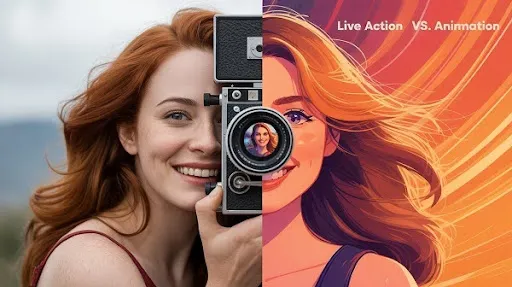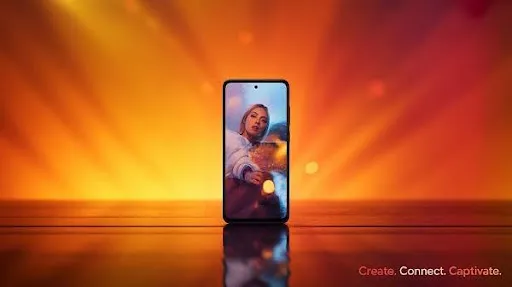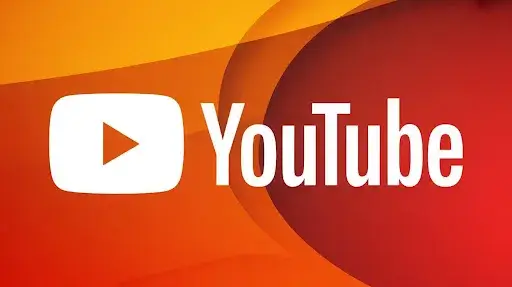Some marketing decisions are easy — picking the coffee brand for the team, the day for the product launch party. Then there’s the big one: choosing live action vs animation for your next project. That’s the kind of decision that shapes the entire campaign.
Both formats can be engaging, although they operate in completely different ways. One employs a recording of the real, physical environment. The other builds something completely new from scratch. Your choice can influence not just the style but the effectiveness of the final piece.
At Prolific Studio, we’ve worked on countless animation and live-action videos for clients across industries. The truth is, the best choice isn’t about which format is “better” in general — it’s about which format is better for your goals, your audience, and your story.
Main Differences Between Live Action & Animation
Live action uses real people, real places, and physical objects. Cameras capture performances, locations, and the subtle human expressions that make scenes feel authentic.
Animation, in contrast, is built frame by frame using digital tools. Artists and animators create characters, scenes, and movements entirely from scratch. There’s no limit to what can be shown — from talking animals to impossible physics.
Here’s a straightforward live-action vs. animation comparison:
| Aspect | Live Action | Animation |
| Visuals | Filmed with real actors, locations, and props | Designed digitally using 2D, 3D, or hybrid techniques |
| Production | Requires physical sets, cameras, lighting, and crew | Requires animators, storyboard artists, and rendering software |
| Realism | Natural human expressions, realistic environments | Anything is possible, even surreal or fantastical elements |
| Time Factors | Dependent on shoot schedules, locations, and weather | Dependent on the animation pipeline and rendering |
| Budget | It can be high due to crew, locations, and actors | Can be cost-effective depending on style and length |
| Flexibility | Limited by physical constraints | Limitless creative freedom |
Understanding the Production Processes for Live-Action and Animation Videos
The animation and live-action process couldn’t be more different.
Live-Action Production Steps
- Pre-Production – Planning scripts, casting actors, scouting locations, and preparing sets.
- Shooting – Filming scenes with cameras, lighting rigs, microphones, and a full crew.
- Post-Production – Editing footage, color correction, adding sound effects, and finalizing the video.
Balancing quality with staying within budget. Enhancing quality while remaining cost-effective. Sticking to a budget while maintaining quality is always an effort alongside managing calendar conflicts and contending with rain.
Typical Animation Process
- Concept & Script – Just like live action, it starts with a solid story.
- Storyboarding – Sketching out the sequence of shots.
- Design & Modeling – Creating characters, backgrounds, and props.
- Animation – Bringing designs to life, frame by frame.
- Rendering & Post – Adding textures, lighting, and polishing for the final product.
For every stage, the animation or video production company in charge of the project typically works with various other experts, which is quite complex, yet orderly, in a sense.
Pros and Cons of Live Action vs Animation
Every format has its strengths — and its limitations.
Benefits of Live Action vs Animation
Live Action Pros
- Captures natural human emotion and expressions.
- Relatable for audiences who prefer realistic visuals.
- Works well for showcasing real products, environments, or testimonials.
Live Action Cons
- Limited by physical locations, sets, and props.
- Costs can spike quickly with large crews and actors.
- Scheduling can be unpredictable.
Animation Pros
- Unlimited creative freedom.
- Perfect for explaining abstract or complex ideas.
- Visual style can be tailored exactly to the brand.
Animation Cons
- Requires specialized skills and software.
- Can be time-consuming for highly detailed scenes.
- May not connect with audiences who prefer realistic visuals.
Key Differences Between Live Action & Animation in Storytelling
Storytelling is at the heart of every video.
Live action works best in cases where feelings and human interaction are important, for example, in customer interviews, product demos, or even book narrations.
Animation works well in explainer videos and commercials that need to simplify difficult themes or require fictional world-building to capture attention. Animation is also used in stylized imagery and brand mascots.
The choice often depends on your project goals — not just the visuals.
Cost Considerations in Animation and Live-Action Projects
Budget often plays a big role in choosing the right format.
Live action can get expensive because of:
- Location fees.
- Crew and actor costs.
- Set design and equipment rental.
- Post-production editing.
Animation has its own costs, but they’re usually more predictable:
- Animation software and rendering tools.
- Animator and designer fees.
- Time for revisions and polishing.
For videos that need to be creative and are short, animation serves as a budget-friendly option. While human authenticity requires a real-life touch, which entails cost.
Timeframes for Live-Action or Animation Production
One common question is is live-action harder than animation?
The project at hand defines the answer. Animation and live action differ in that the latter is unpredictable, while the former is a careful process that takes a long time to complete because of the meticulous attention to detail in every frame.
Typical Timeframes
- Live Action: Can be shot in days or weeks, but pre-production often takes longer.
- Animation: Often takes weeks or months, especially for detailed 3D work.
In situations where time is tight, the need for a flexible structure becomes the deciding factor. While animation poses no outside concerns, live action risks losing speed due to conditions.
Choosing the Right Format for Your Project Goals
Before picking a format, ask:
- Do you need realism or creative freedom?
- Is the budget flexible or fixed?
- How much time do you have before launch?
- Will your audience respond better to real faces or stylized visuals?
Live action footage is great when deeper connections, showcasing products, or emotional engagement are needed.
Explaining an intricate story or elaborate ideas that are difficult to capture on film is animation’s forte.
The best campaigns sometimes mix both — combining real footage with animated elements for a unique effect.
When to Choose Animation or Live Action Production
There is usually an exception to almost any form in animation and live-action projects, as most techniques seem to lean toward a specific style.
Choose Live Action For:
- Product demos where the actual item’s look and feel are important.
- Corporate or brand videos with real employees or customers.
- Events coverage and behind-the-scenes footage.
Choose Animation For:
- Explainer videos that break down abstract ideas.
- Social media campaigns that need eye-catching, shareable visuals.
- Ads requiring surreal or imaginative scenes.
If you work with a skilled animation or video production company, they’ll help evaluate your script and audience to recommend the right choice — or even a blend of both formats.
Mixing Animation and Live Action in One Project
The blend of techniques from both styles can result in a single creation with both primary advantages. Explaining complicated diagrams or data as animations is overlaid on live footage. Seamless animation of specific sections in a live-action advertisement helps portray complicated notions while maintaining visual continuity.
The combination of styles provides an opportunity to produce elaborate elements; thus, the idea of combining animation and live footage is widely used for advertisement production.
Examples of Animation and Live-Action Videos in Marketing
- Live Action Example – A fashion brand shoots models in real environments, capturing how clothes look and move. Viewers instantly connect with the reality of it.
- Animation Example – A SaaS company leverages animated explainer videos to guide users through the complex SaaS platform’s features, ensuring users focus solely on the animations, devoid of real-world distractions.
- Hybrid Example – To illustrate the “refreshing” effect of the beverage, a colorful recap is shown, smoothing over the real people enjoying the drink.
Each approach delivers value — the key is knowing which one aligns with your campaign’s tone and message.
Frequently Asked Questions
Is live-action harder than animation?
In this case, the context matters. Shooting products with people can be harder to do because of the time, specific places, or the weather. Animation requires a different kind of discipline — meticulous attention to detail and technical skills over potentially long production cycles.
Which takes longer: animation or live action?
Detailed animation, especially with 3D elements, can take a significant amount of time to complete, as with live action scenes, which can be quicker, although weather conditions and scheduling can pose delays.
Can animation and live action be used together?
Yes. A large number of advertisements and corporate films fuse the two formats to increase engagement and comprehension, as critical parts can be augmented with animation over live action footage.
Which is more cost-effective?
Cost variation depends on the animation and live action segments of the project. Animation tends to be more cost-efficient, especially for complex visuals, which are costly to recreate. Live action filming requires a crew, more resources, and costs varying depending on the scale of the project.
What’s the typical animation process?
Steps include concept development, storyboarding, design, animation, rendering, and post-production. Each stage can be performed only by qualified personnel skilled with relevant software and tools.
Which format works better for product marketing?
If the product’s physical features are key, live action works best. For services, apps, or abstract solutions, animation can simplify explanations while maintaining visual interest.
Final Word
Your goals and audience, the story and its context, and live action and animation styles should all be considered simultaneously in order to achieve a more coherent and integrated flow.
Live action serves best when a project requires a visceral connection, authenticity, or real emotional expressions, while animation serves best when creative and visual flexibility, style, or elements impossible to capture with cameras are needed.
The most successful brands don’t just pick one by default — they evaluate the key differences between live action & animation, weigh the benefits of live action vs animation for their campaign, and select the method that will deliver the most impact.
At Prolific Studio, one of the best animation studios in Reno, we understand the full animation and live-action process. Our aim as a company is to help your business engage your audience on a deeper emotional level while creating visually stunning videos.
If you’re ready to bring your story to life — in full color, on camera, or frame by frame — reach out to our team today. Let’s make something unforgettable.
Related articles:










